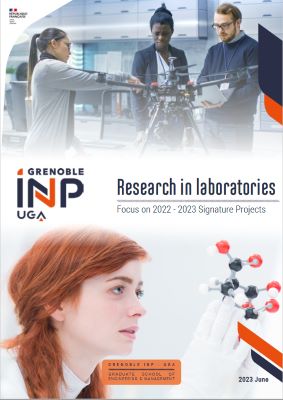Article written by Isabelle Chéry, Violaine Bigot and Gaëlle Calvary
There are many ways in which companies and public institutions can collaborate, depending on the nature of the problem to be solved (degree of innovation targeted in terms of technical barriers and/or scientific uncertainties to be overcome) and the constraints on the solution (for example, the time required to solve it). Depending on the system chosen, the financing of the collaboration, state aid, confidentiality, intellectual property of the results generated, deliverables, etc. are treated differently.
For the joint exploration of scientific and/or technical issues, the collaboration can take the form of an industrial cluster, also called a research cluster. When it is extended to training, it is called a research and teaching or training cluster. A cluster brings together companies, laboratories and/or schools within a single project to advance science and possibly training in a defined field. The cluster may be of the sponsorship type.
Pursuant to the decree of 6 January 1989 on economic and financial terminology, sponsorship is “material or financial support provided, without direct consideration from the beneficiary, to a work or person for the exercise of activities of general interest”. The patron benefits from tax advantages, as provided for in the l1 August 2003 law n° 2003-709 on patronage, associations and foundations. Sponsorship can be of different types: financial sponsorship (cash donation), skills sponsorship (free of charge provision of staff) or equipment sponsorship (donation of equipment such as PCs, laboratory equipment, etc.).
Patronage clusters are supported by higher education, research and innovation foundations, i.e., partnership or university foundations. They are governed by a sponsorship agreement signed between the industrial partners of the Cluster and the Foundation on behalf of the laboratories and/or training components that it hires. The agreement sets out the conditions of the collaboration: the subject of the study and its societal challenge, each partner’s contributions and the management of the project by the Foundation, including regular monitoring of the work by a steering committee and a scientific council.
As a matter of principle, the results of a Patronage Cluster are publicly accessible: public and private partners can neither keep the results confidential nor protect them through intellectual property rights. Consequently, industrial partners do not commit to a sponsorship cluster to gain a competitive advantage: they commit for other reasons, such as advancing knowledge, promoting their values, developing their networks and collectively exploring new subjects, which could lead to the emergence of new markets for all. In return for their investment, the partner companies receive an annual receipt from the Foundation allowing them to claim a tax credit, which can be carried forward for 5 years, for 60% of the amount committed to sponsorship for the year.
If, on the other hand, the partners wish to have intellectual property rights at the end of the collaboration, they should not opt for sponsorship-type clusters. They should opt for other arrangements such as CIFRE theses, joint laboratories, etc., which will provide for rules on confidentiality and intellectual property. From then on, this work will benefit from tax advantages such as the research tax credit but not those linked to sponsorship. The schemes can be combined provided they are strictly regulated. The rules relating to these two collaborative areas (sponsorship clusters and other research collaboration contracts), if they are conducted in parallel, may be formalised in a global agreement of the framework agreement type.
Patronage clusters should not be confused with other types of clusters. The ANR, for example, has a call for projects “Industrial clusters Programme” which it subsidises. The Artificial Intelligence Institutes are also structured around the cluster concept. In this context, the results obtained can be kept confidential or protected by intellectual property rights. In this case, the parties involved formalise a consortium agreement that will provide for the confidentiality of the results, deliverables and the sharing of any intellectual property rights arising from the results as well as their exploitation.




